

William Stopford
Every SUV, ute and van discontinued in Australia in 2025
11 Hours Ago
Ford's all-new Euro-sourced Puma is a likeable compact SUV, blending crossover style with all-round goodness – especially its cracking on-road manners.

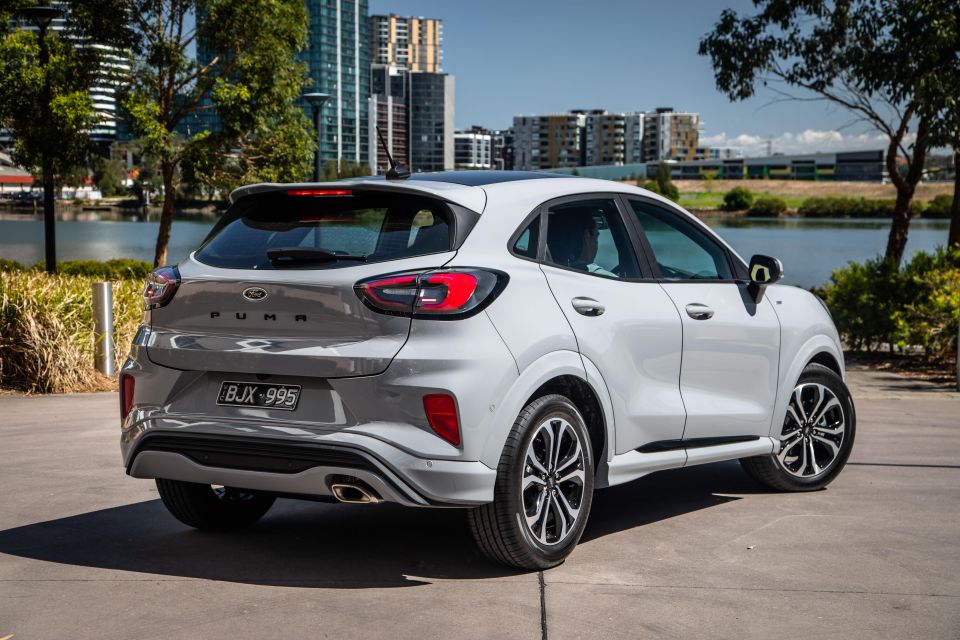

Journalist
New from
$32,340
excl. on-roads

Journalist
New from
$32,340
excl. on-roads


Journalist
New from
$32,340
excl. on-roads

Journalist
New from
$32,340
excl. on-roads
Quickly see how this car stacks up against its competition. Select any benchmark to see more details.
Where expert car reviews meet expert car buying – CarExpert gives you trusted advice, personalised service and real savings on your next new car.
Puma? Ford’s fresh-faced compact SUV doesn’t resemble its insect-looking 1990s coupe of the same name at all. Nor does it look like a ferocious feline, or athletic footwear. Did Ford marketing run dry on the inspiration juice?
Apologies for kicking off a review of Ford’s important new foray into small SUV land negatively. Namesake apart, there’s much to like about the freshly-conceptualised Puma targeting those after crossover spunk.

It’s good. In areas, it’s really good. Not perfect by any stretch – and it remains to be seen if the neat, conservative styling resonates with buyers – but as first impressions go it looks like a worthy contender for a tough segment. And it needs to be in order to take on the likes of the C-HR, Seltos and T-Cross, and possibly steal thunder from the popular CX-3, Kona and HR-V.
We’ve already dug deep comparing Puma against the form guide of a dozen key small-SUV segment players, and on paper it stacked up quite handsomely. Now it’s arrived in Australia. Time to see what it’s made of.
The mid-range ST-Line, pitching a deft balance of flash and value, is tasked with the job in this review.

At $32,490 before on-road costs, the Puma ST-Line is the middle-grade trim of a lean three-variant range kicking off with the entry Puma FWD ($29,990) and topped with the full-fruit ST-Line V ($35,540).
Ford has launched the range with nation-wide drive-away offers, with our ST-Line tester advertised at $33,990 drive-away.
As outlined in our pricing story, there are quite a few options available, including the Park Pack ($1500) of active safety and parking enhancements, a blacked-out roof ($500) and roof rails ($250), a panoramic sunroof ($2000), and a powered tailgate ($750).
The ST-Line can be had in three standard or seven premium finishes that add $650, such as the solid Grey Matter hue featured on our test car.
To get a more accurate idea of pricing, you can jump onto the official Ford website to use the Puma configurator.
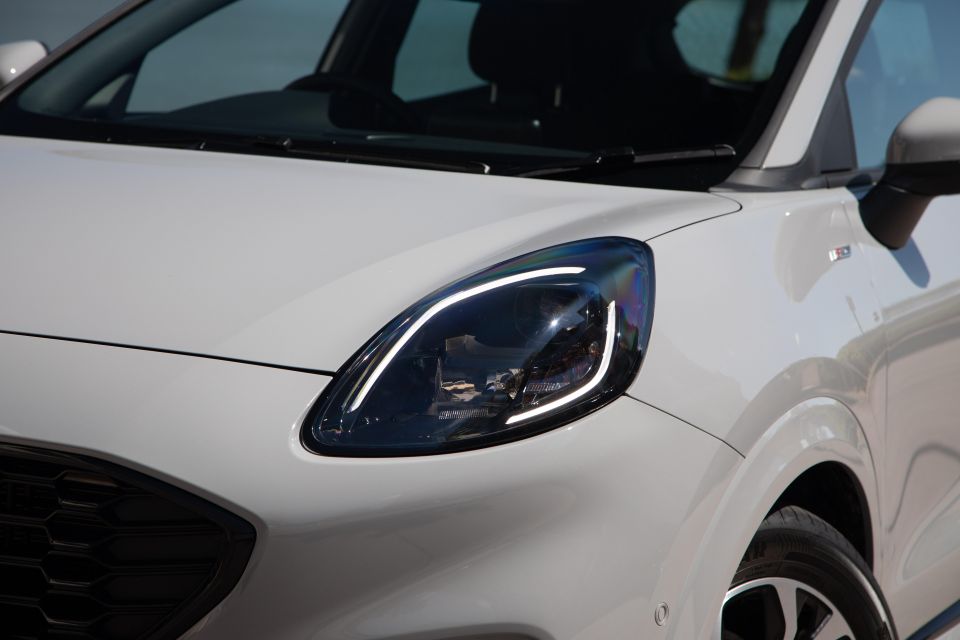
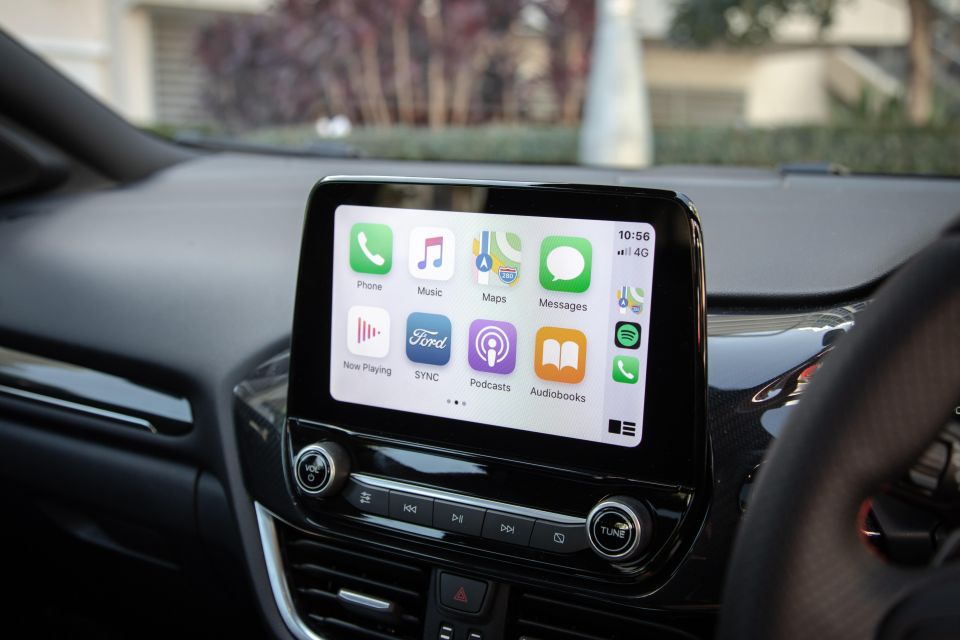
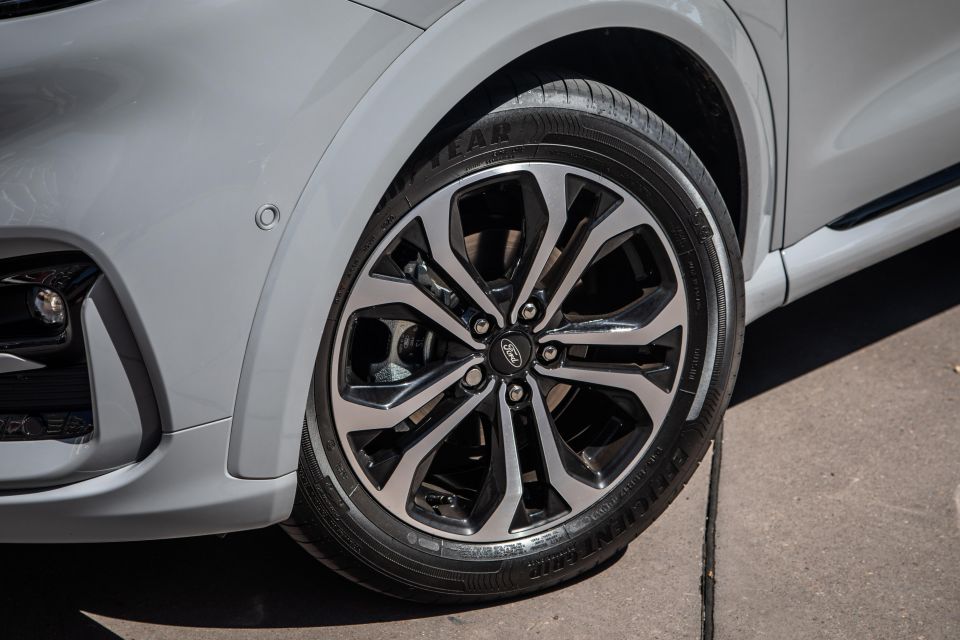
Buy your new car without the stress. It's fast, simple and completely free.

Great service from Travis and team, second time I have used this business would not hesitate to recommend them to anyone
Craig C.
Purchased a Ford Ranger in Sunshine Coast, QLD
CarExpert helped Craig save thousands on his Ford Ranger, now let us save you on your next new car.
Find a dealOn list pricing, the mid-range turbo-petrol Puma pitches itself directly against front-driven rivals such as the Mazda CX-3 Akari ($33,950), Hyundai Kona Elite ($30,600), Honda HR-V RS ($32,990), Kia Seltos Sport+ ($32,490 list), Toyota C-HR GXL ($30,915), Volkswagen T-Cross Style ($30,990) and a host of other compact and small segment contenders.
Unlike the Puma, some of these nameplates can be had in all-wheel drive form.
With its sporty theme the mid-range ST-Line’s exterior features a mix of spec from the variants above and below in the range. Wheel size is 17-inches like the regular Puma (the ‘V’ gets 18s) but it wears the same lowered sports suspension and sports body kit as the flagship, as well as a blacked-out front grille.
Other exterior features include dusk-sensing LED headlights with auto high-beam, LED daytime running lights and tail lights, heated and power-folding side mirrors, rain-sensing wipers and rear parking sensors.
Inside, the ST-Line upgrades include 12.3-inch digital instrumentation – the base Puma gets analogue dials – as well as a flat-bottom paddle-shift steering wheel, metal pedals and cloth-trimmed sports seats with red stitching. The neat carbon-fibre-look inlays carry over from the base Puma.
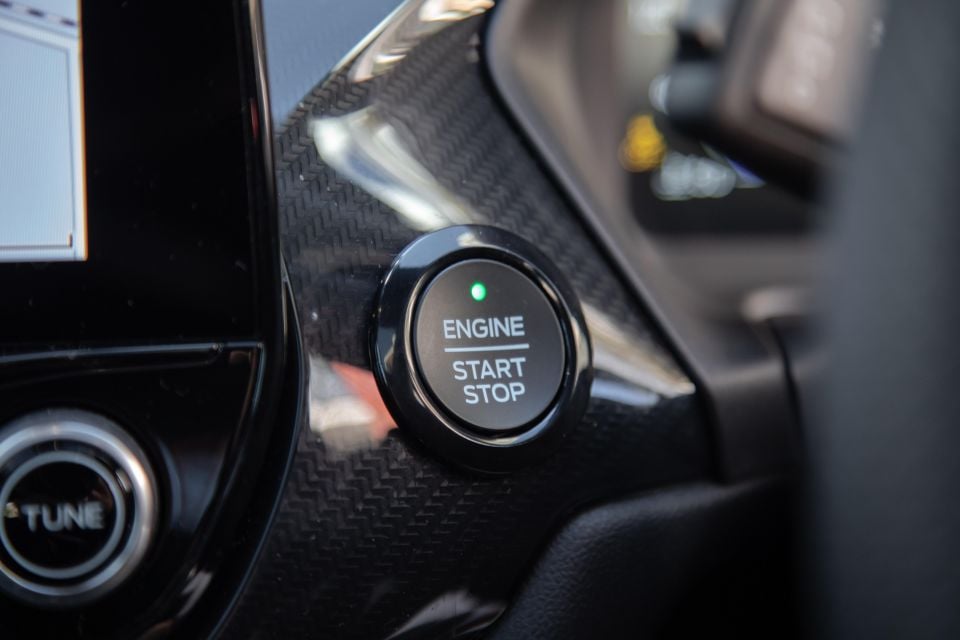
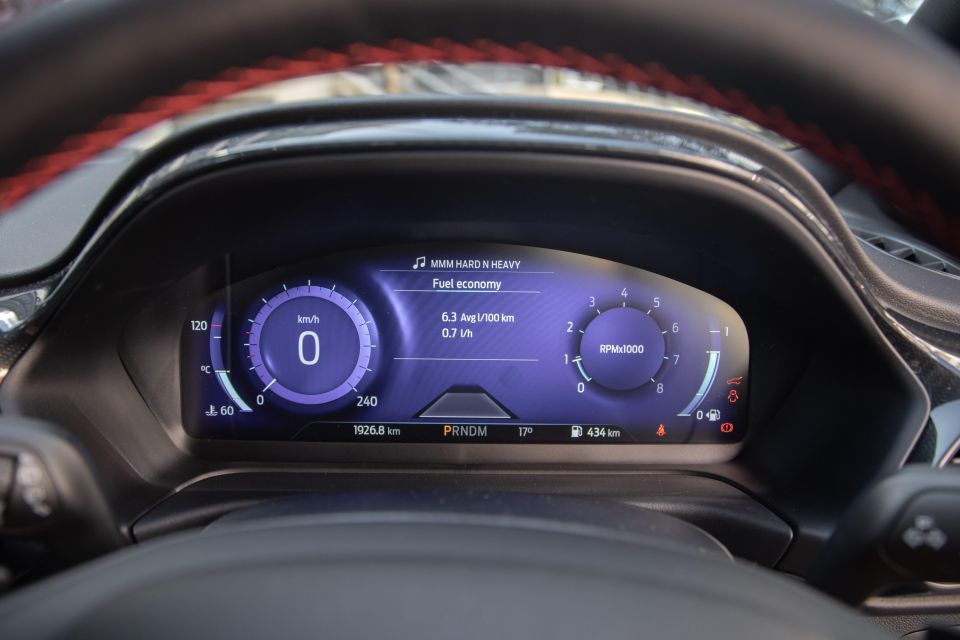
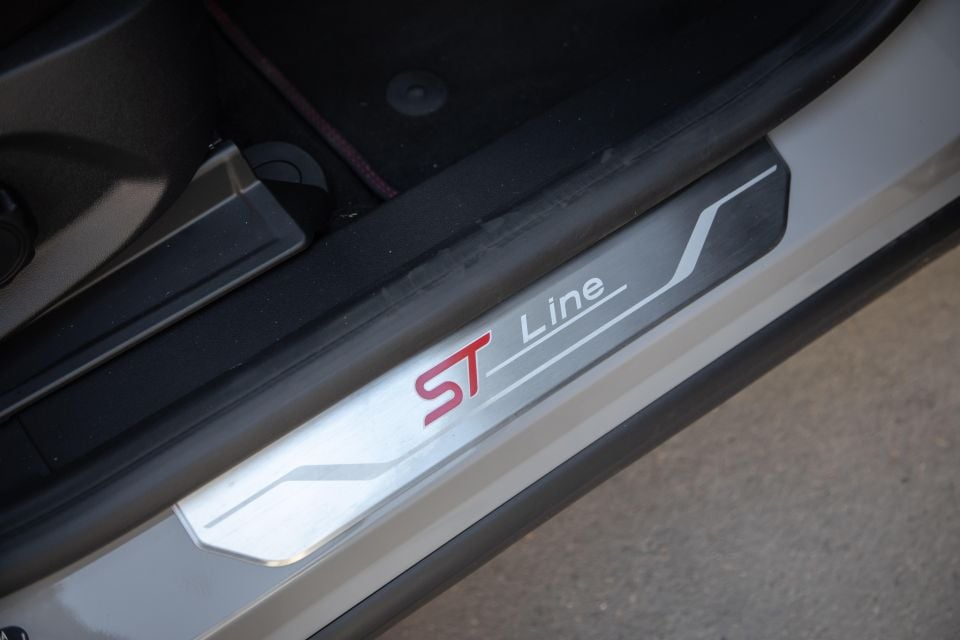
Elsewhere, the cabin features keyless go, cruise control, a reversing camera with adaptive guidance, seven-speaker audio, powered windows, wireless phone charging, LED ambient lighting, an auto-dimming rear-view mirror, tyre pressure monitoring, USB-A and USB-C outlets, a dual-level boot floor, and space saver spare.
Infotainment is Ford’s Sync 3 format with an 8.0-inch touchscreen, DAB+, proprietary sat-nav, Bluetooth phone and audio streaming, and Apple and Android smartphone mirroring. For a bit of added whiz-bangery, there’s the FordPass Connect modem and app compatibility allowing users to remote start or lock/unlock doors using a smartphone.
Unusually, the ST-Line has manual air-conditioning instead of the climate control featured in both the base and top-spec variants. Otherwise, the features list appears pretty fulsome with some nice feel-good equipment in areas that pander to many buyer tastes.
You can download the Ford Puma official brochure to view all the options and inclusions across the range.
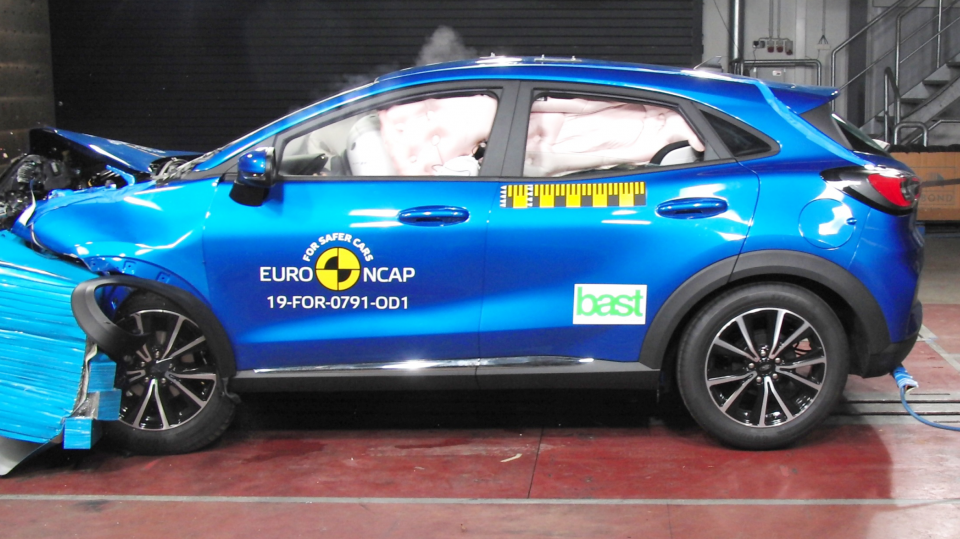
ANCAP has awarded the entire Puma range a five-star rating based on testing conducted by Euro NCAP in 2019.
As reported prior, the range scored 94 per cent for adult occupant protection, 86 per cent for child occupant protection, 77 per cent for vulnerable road user, and 74 per cent for safety assistance.
Our ST-Line fits six airbags as well as the range-wide swag of standard kit including city and interurban (up to 130km/h) autonomous emergency braking with pedestrian and cyclist detection (up to 80km/h), forward collision alert, lane-departure warning and lane-keeping assistance, traffic sign recognition, driver impairment monitor, and emergency assistance functionality. Essentials covered, then.
Our test car fits the cost-optional Park Pack that adds lane centring, evasive steering assistance, blind-spot monitoring and front parking sensors – among other features – as well radar-based functionality that raises the AEB speed threshold and facilitates adaptive cruise control with stop-and-go capability.
You can find out more information about the safety features of the Puma via the official Ford Puma page.
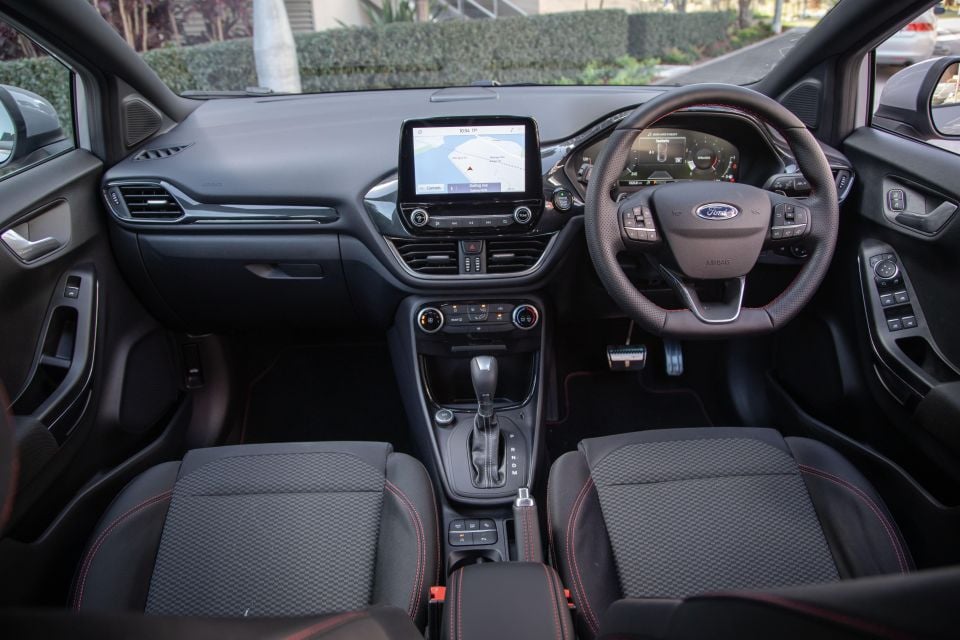
For a Fiesta-based device the Puma is quite substantial in size – it dwarfs our household’s Mk V Volkswagen Golf despite the similar wheelbases. In profile there’s more of a crossover vibe than perhaps there is from other viewing angles, a theme that seems consistent when climbing into a cabin that takes the sporty ball and runs with it.
The first row is a class act, amply roomy and airy with the hatchback-like format of low-slung, driver-centric seating and control placement. But the packaging give-and-take becomes evident when you climb into the second row, which is cosy in all dimensions and will only offer proper adult comfort for relatively short trips.

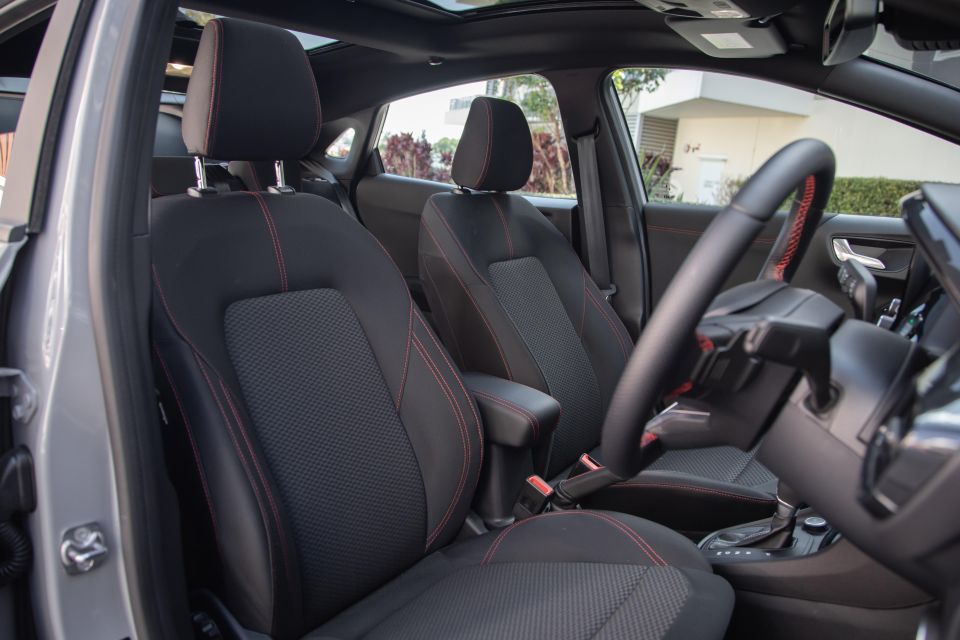

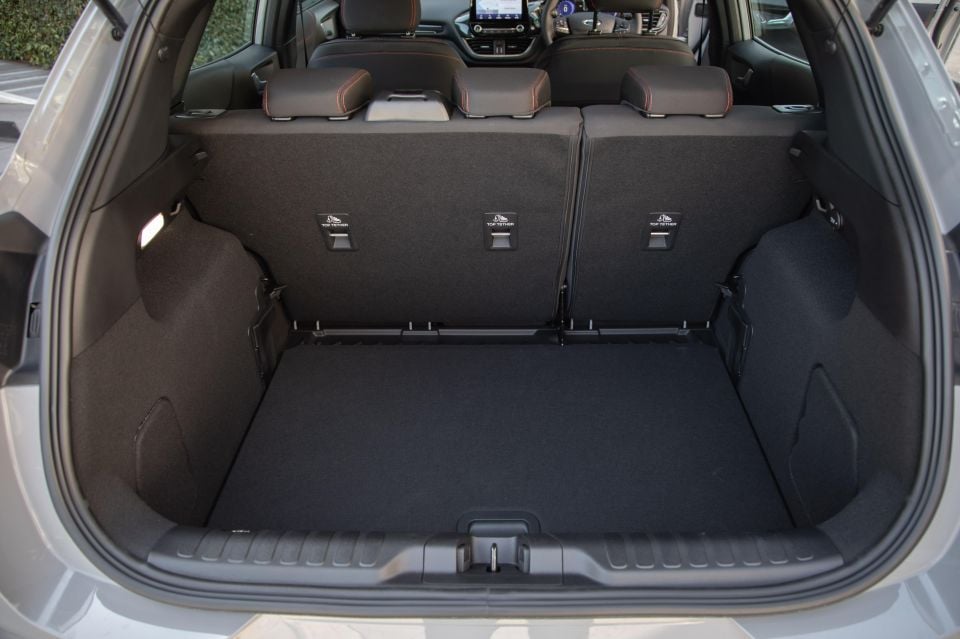
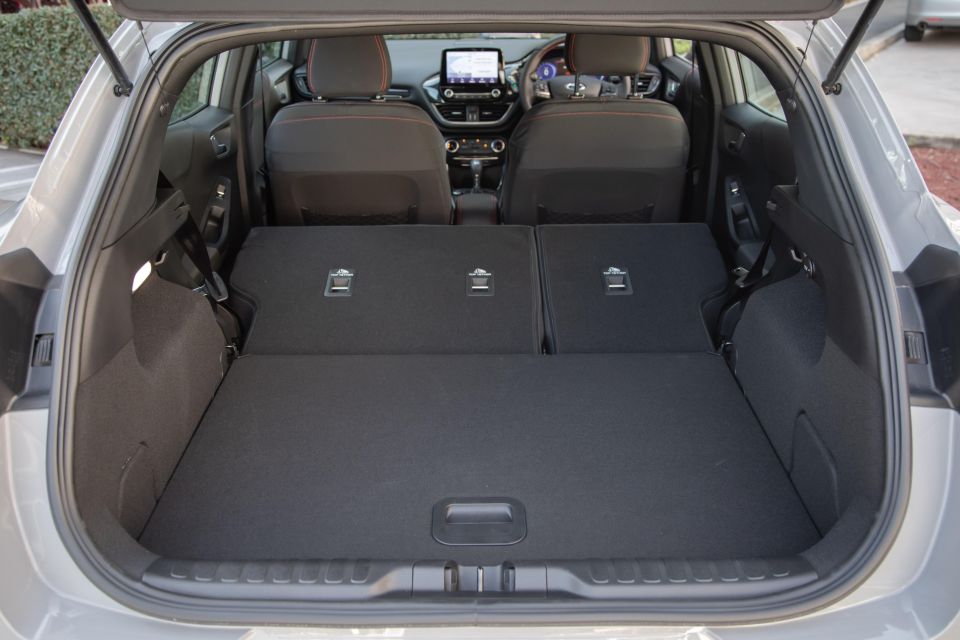
Further back the boot initially appears tiny, if only when the removable floor panel is located in its ‘high’ setting (which is handy for easy grocery access) on its spring-loaded stands. Set in its low position, there’s a decent 376 litres of volume not counting the handy 34 litres of extra space in a square cubby below the floor and above the space saver spare. The 60:40-split seating stows for a reasonably flat load space and 1170 litres to the ceiling.
In short, the Puma is pretty decent for interior and luggage space, but with packaging leveraging vibe over spaciousness it’s perhaps not the ideal pick in segment if roomy accommodation is a top buyer priority.
The interior design is unmistakably Ford if a little softer around the edges, crisper in execution than some other stablemates and bringing a more upmarket feel that’s a little less conspicuously cost-conscious, particularly in material use. Stuff such as shiny budget-looking plastics are at a minimum, the seat cloth is tactile enough and the touch-points are pleasing, right down to the rubber-ringed centre stack dials.
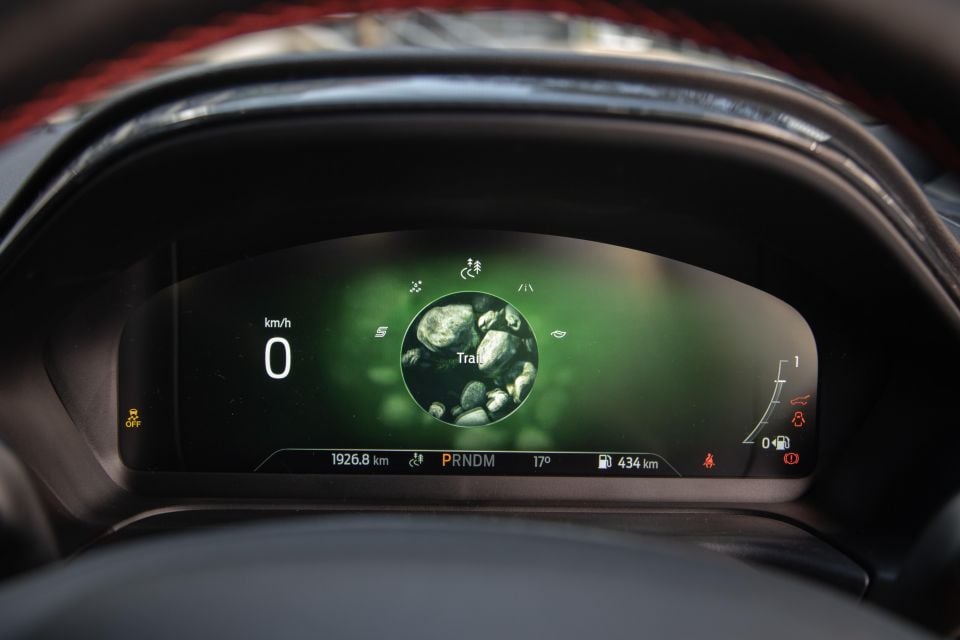
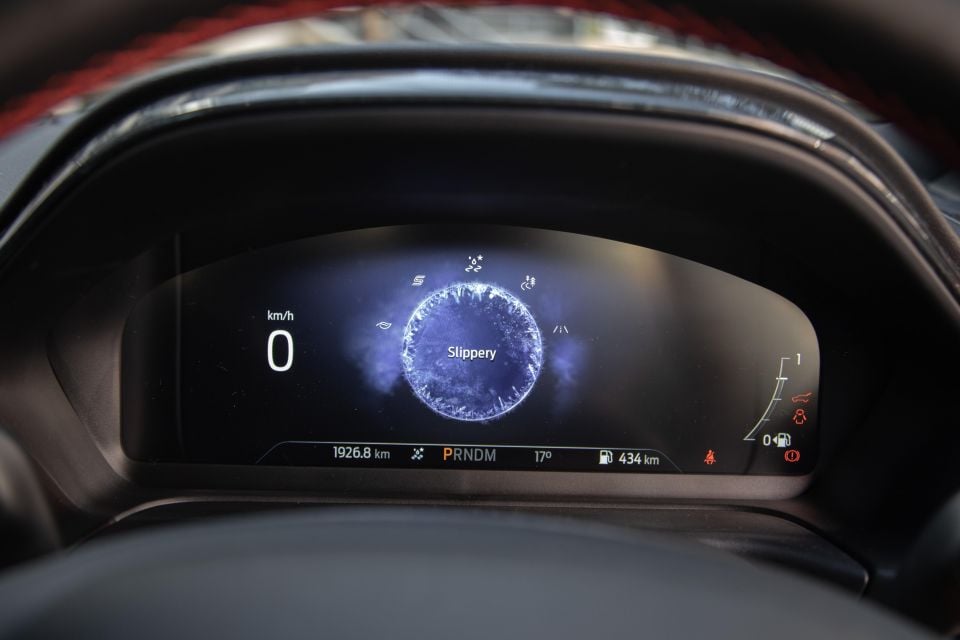
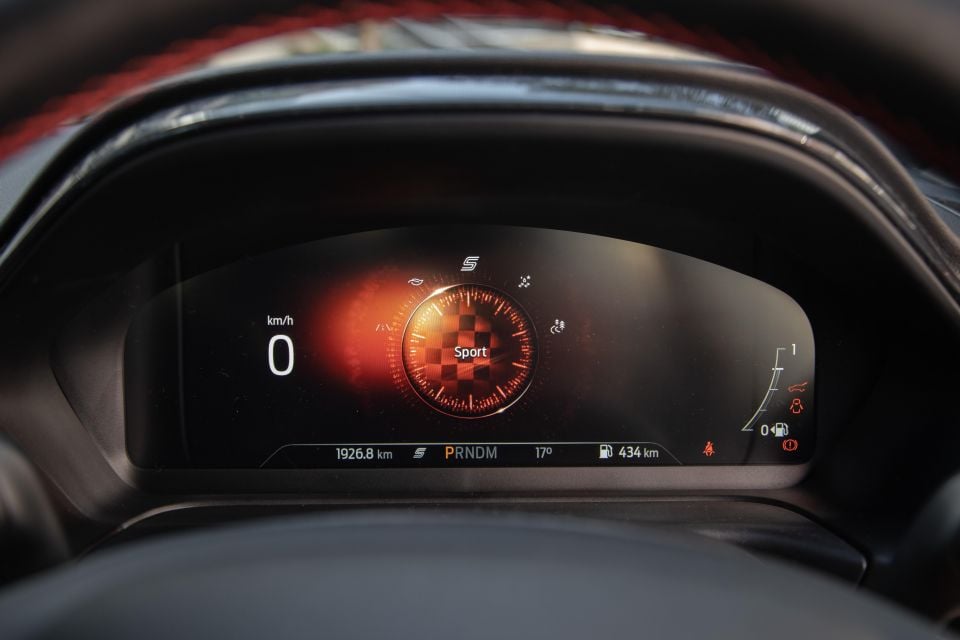
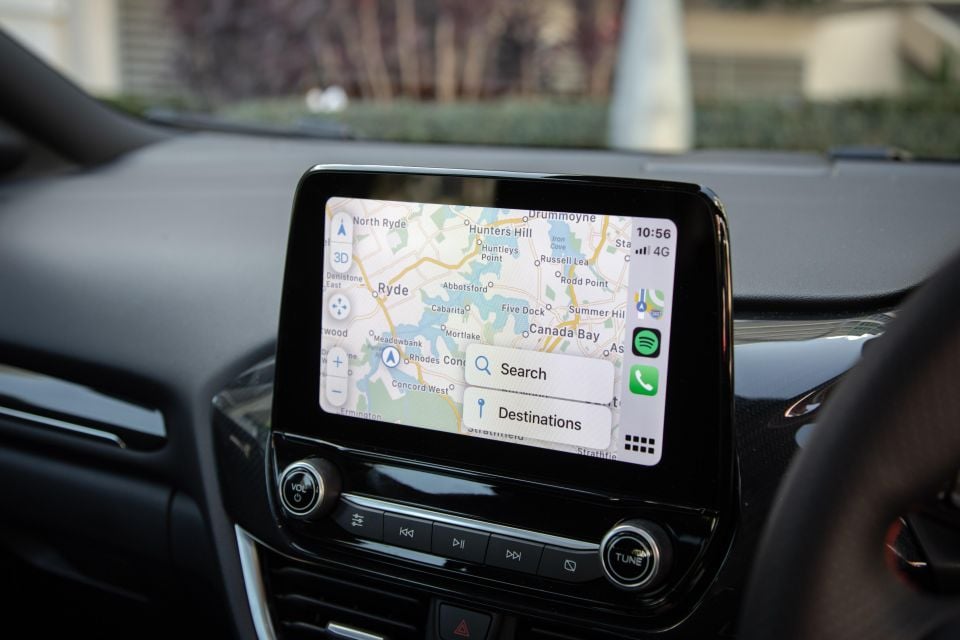
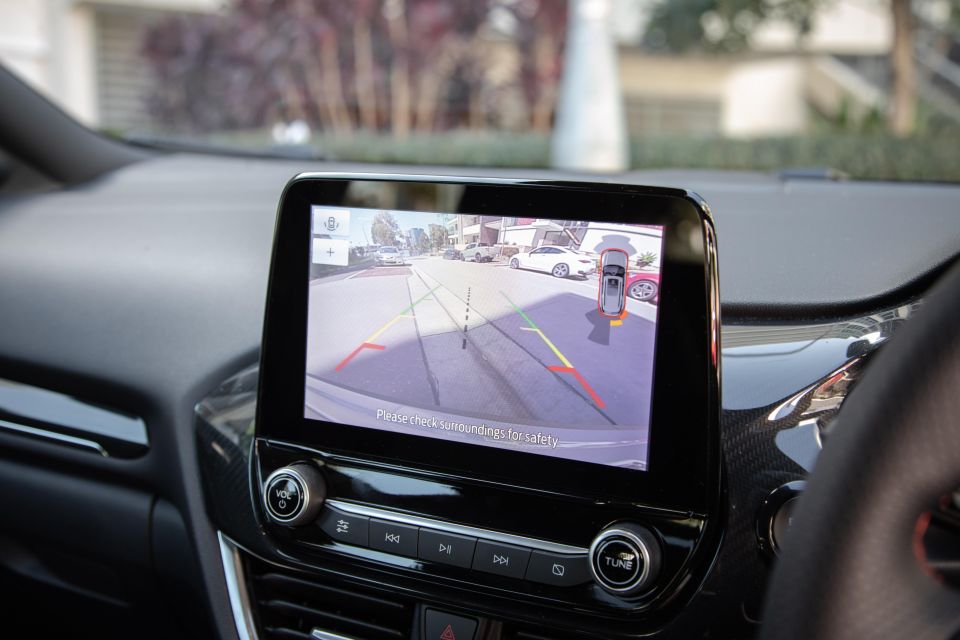
Some effort has gone into making the digital instrumentation quite fancy, be it the cutesy puma (the animal) graphic on start-up or the theatric intermission you must sit through as the graphic skins morph from one selected drive mode to the next. Each different display, though, is crisp and quick-glance legible in what’s a neat and distinctively ‘Ford’ look.
Ditto the Sync 3 infotainment, which is quick, intuitive to use and easy to read. The angled inductive charging tray is ideally located if, like most designs, clumsy once you tether for phone mirroring, and the USB port location seems like a bit of an afterthought (the sole port in the console bin is USB-C).
It’s a shame row two isn’t as cohesively executed as the first: there are no air vents, no device power and the rear window glass protrudes conspicuously from the lower window ledge when fully lowered.
You can see a side by side comparison of the various interior features for each of the variants by downloading the official Ford Puma brochure.
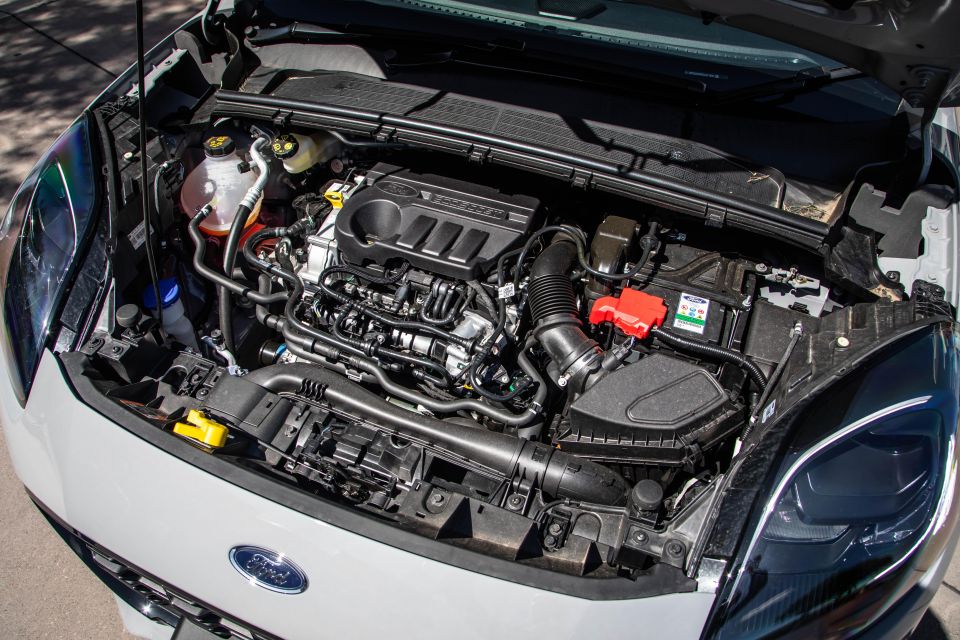
With just 92kW at 6000rpm and 170Nm between 1500-4500rpm, the Puma’s 1.0-litre turbocharged petrol three-cylinder sits in the shallow end of the segment’s horsepower and torque pool. It’s paired with a seven-speed dual-clutch transmission and front wheel drive, which is the only powertrain option currently offered in Australia.
Thanks in part to Puma’s quite light 1287kg kerb weight, claimed combined consumption is an optimistic 5.3L/100km, which is right at the frugal end of the compact and small SUV segments. Even its claimed urban figure is a handy 6.3L/100km (extra-urban is 4.7L/100km).

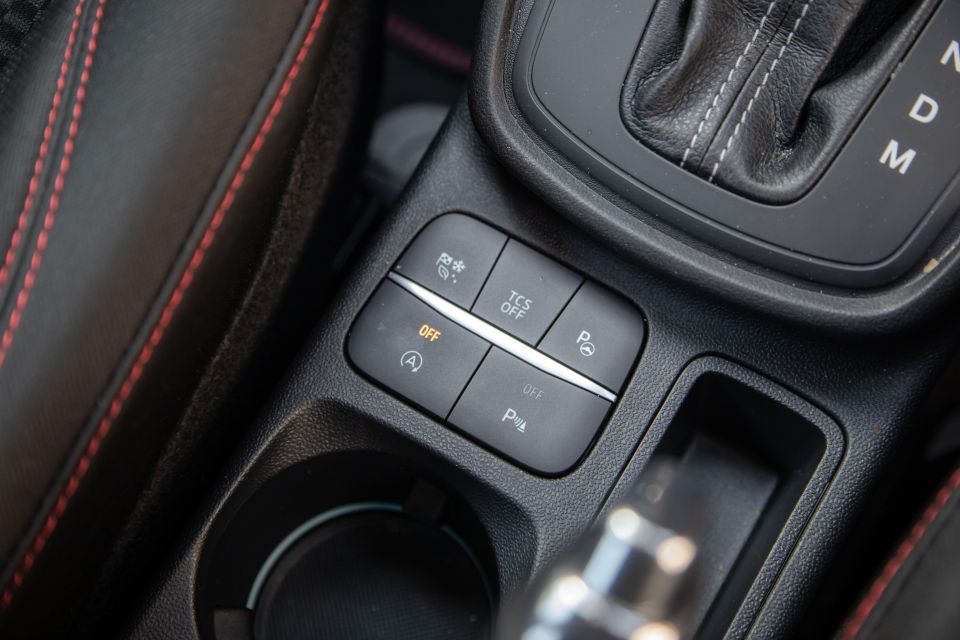
Our Puma ST-Line test rarely crept above 6.3L/100km indicated during a few hundred kilometres of what was mostly urban driving on test. In fact, it seemed hell-bent on sticking within the 6.1-6.3L range no matter how it’s driven in any mode. Very impressive indeed.
Under low engine load it’s capable of dropping down to just two cylinders to further reduce fuel consumption and it seems to work a treat.
Ford claims 10.2 seconds for the 0-100km/h run. That’s hardly what you’d call a ‘sprint’, per se, if not necessarily all that tardy for the segment.

The hands-down highlight of the Puma ST-Line is its on-road performance. It’s a fantastic thing to drive, certainly among the finest and perhaps even the top of its segment, though comparative testing will draw definitive conclusions when the time comes.
What makes the ST-Line so impressive is it nails the driving goodness trinity. It offers surprisingly fit dynamics while returning better than expected ride comfort, all while demonstrating powertrain goodness well beyond what its modest on-paper credentials suggest.
What a great little engine. Its off-the-mark tractability is remarkable, channeling all of its tractive effort in a blink, with instant response to the throttle without any peakiness, turbo lag or transmission lag.
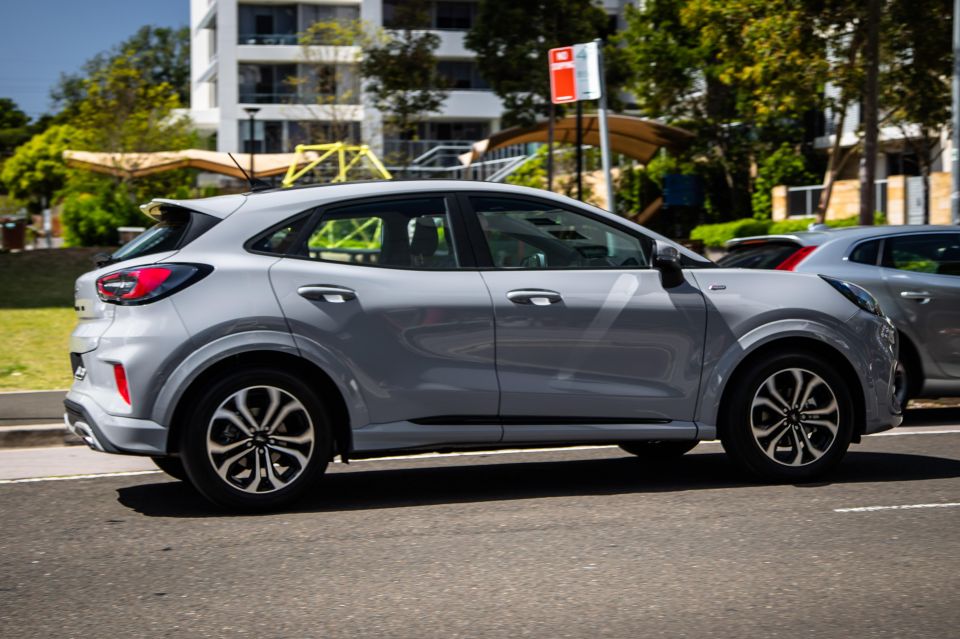
Indeed, the seven-speed dual-clutch is so polished in calibration, from a standstill or in gear changes, you’d easily mistake it for a torque converter. Further, the way the transmission surgically targets the three-cylinder’s sweet spot makes the engine feel much more substantial in capacity and torque output than it actually is.
The only time the engine hints at heated effort is when Puma is well laden – with three adults aboard the high-rpm acceleration becomes a little blunted with the lack of sheer horsepower. But for balanced around town driving and spirited punting one or two up, it gets along impressively well and gets downright enthusiastic once you activate ‘Sport’ mode.
We described the dynamics as “hot hatch-like” in our overseas drive of the mild-hybrid ST-Line X and, to a point, the petrol version justifies the rave.
Steering, balance, grip and poise are all high level and this ST-Line’s sports suspension tune was almost certainly developed by drivers for drivers. This chassis genuinely returns enjoyment and reward to the keen punter.
What it doesn’t suffer is hot hatch-like ride stiffness. Perhaps it’s the combination of large 55-aspect ratio tyre sidewalls with this suspension tune – the ST-Line V fits 18-inch 50-series rubber – but the ride manages to smooth out the coarse stuff, dull the sharp hits and absorb potholes and speed bumps impressively well. It also manages to do so without compromising its wonderfully crisp and lively driving character.
The Puma ST-Line is a proper crossover where it counts – a driving experience akin to a well-sorted sport-tuned hatchback free from the ponderous disconnect usually associated with the SUV form. A good sign, then, the forthcoming hot ST version should be an absolute cracker of a drive – though it’s currently off the cards for Australia.
That said, there’s no real negative trade-off in urban friendliness. Outward visibility is superb, it’s easy to place and judge, while parking is a doddle as the large, clear, 180-degree reversing camera view is so effective.
The turning circle is a nice and concise 10.5-metre diameter, too. While the Puma has a habit of setting off the alarm bells while stationary with its doors open, on the move its safety systems are well-judged and smartly calibrated.
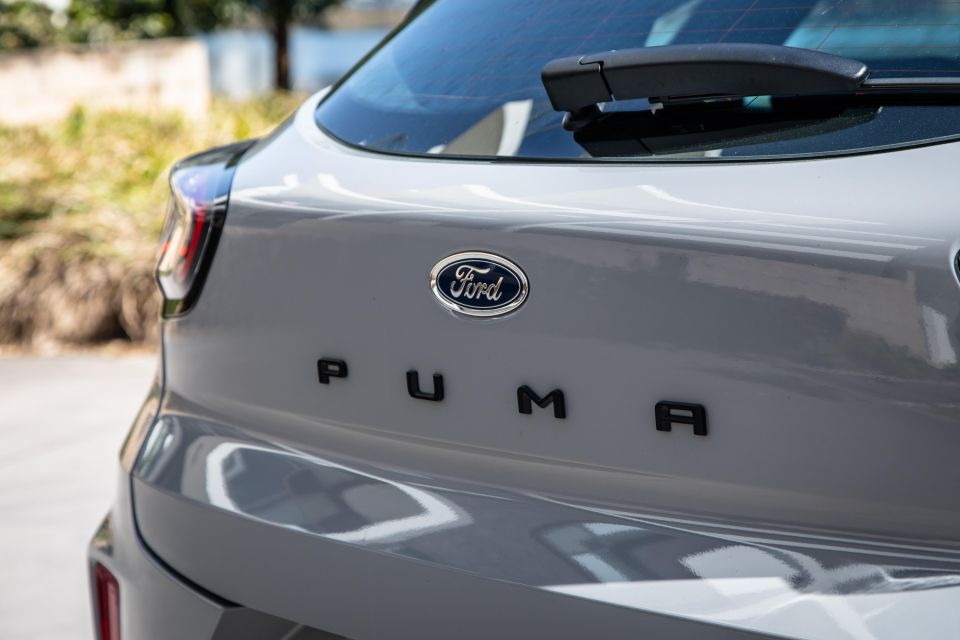
Where expert car reviews meet expert car buying – CarExpert gives you trusted advice, personalised service and real savings on your next new car.
Ford offers five years of unlimited-kilometre warranty on the Puma line-up. It’s not quite as generous as Kia or MG, but basically line-ball with the rest of its key opposition.
Servicing is capped at $299 per visit on a 12-month/15,000km schedule for up to 48 months/60,000kms. That’s about middle of the pack for mainstream small-SUV maintenance costs.
The Puma does require 95RON fuel, which is fairly typical of today’s small-capacity turbocharged engines.
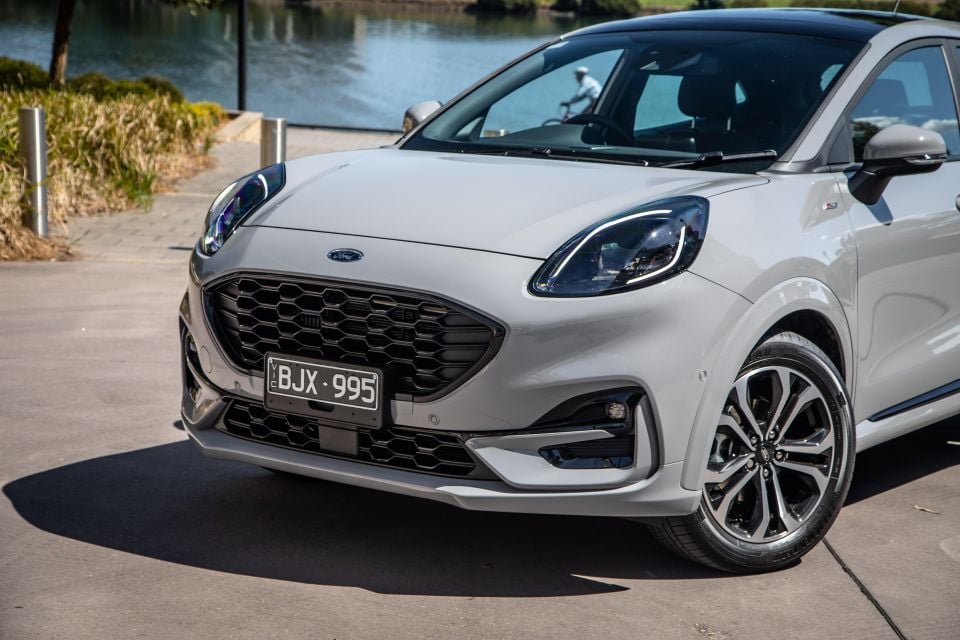
The new Puma demonstrates some real depth of quality in many areas, is loaded with some nice gear, and makes a decent value pitch.
On balance, it’s a cracking crossover and a fantastic drive, and really only seems a bit compromised as a genuine family-hauling SUV due to its cramped second row.

But does the Puma really need to be all things to all buyers? No. Remove the requirement for hauling four adults – or big kids in the back – and it’s a compelling proposition as the urban lifestyle runabout for the youthful or young-at-heart alike. And, if a bit of driving enjoyment is essential on your shopping list, don’t overlook Ford’s newcomer as an option.
Further, if your head demands a bit of SUV flexibility but your heart yearns for a genuinely great drive – with some excellent real-world fuel economy returns as a bonus – the Puma ST-Line comes highly recommended.
If you’re interested in finding out more about the Puma, you can register your details to get updates directly from Ford. Or you can pay your local Ford dealer a visit.
Where expert car reviews meet expert car buying – CarExpert gives you trusted advice, personalised service and real savings on your next new car.


William Stopford
11 Hours Ago


Ben Zachariah
12 Hours Ago


Derek Fung
12 Hours Ago


Matt Campbell
19 Hours Ago


William Stopford
1 Day Ago


Josh Nevett
1 Day Ago